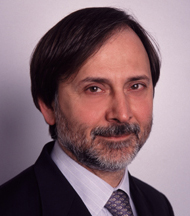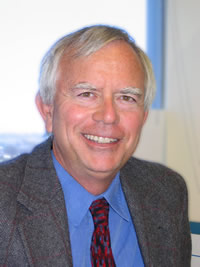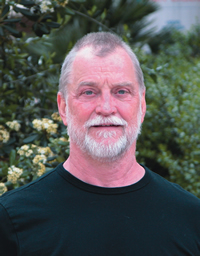
|
20th IEEE/ACM International Conference on
|

|
20th IEEE/ACM International Conference on
|
Wednesday, Nov 9, 9:00-10:30 at Renaissance I, II and III (combined rooms)
Alfonso Fuggetta, CEFRIEL - Politecnico di Milano
Software is the core constituent of many modern products and services. Many industrial sectors can be considered an "application" of computer science and software engineering, as they increasingly rely on software to provide their features and functionality. For instance, mobile phones have completed their transformation from specialized telecom devices to mobile computers: making phone calls (possibly using VoIP) is just one of the many (software) features offered to the customer. In general, many market sectors are dramatically changing their nature, structure, and operations as a result of their transformation into software-centered businesses.
The main consequence of this dramatic change is that software has become a strategic asset for companies, institutions, individuals, and governments. Free software and software patents are perhaps the hottest topics that are being nowadays discussed by researchers and practitioners. In general, it is essential to understand how software impacts on business models, the management of Intellectual Property, industrial development, and the society in general (GNU.org claims that "free software is a matter of liberty"). As such, the subject is extremely complex as it has different dimensions and facets. It is not just a matter of technology: rather, it is a combination of technological, legal, social, economical, and even ethical and emotional issues. This means that is difficult to identify a common ground of discussion and to properly assess claims and opinions.
The talk will provide an overview of the trends in the software industry and in representative industrial sectors that are increasingly relying on software. It will then briefly discuss how software is affecting our society in general, and the role of software patents in innovation. This analysis will be instrumental to present some reflections and proposals to master the complexity of the problems we are challenged to face with.

Alfonso Fuggetta was born in Milano in 1958. After graduating from Politecnico di Milano in 1982, he worked for a software consulting company from 1980 to 1988, when he joined CEFRIEL as a senior researcher. In 1992, he got a position of Associate Professor (with tenure) at Politecnico di Milano. In 2000, he was promoted to Full Professor and to Deputy Director of CEFRIEL. In 2003, he was appointed Scientific Director of CEFRIEL. In the past years, he was a member of several committees of the Italian Government including the Government Committee on Open Source Software in the Public Administration. In 1994, he was a visiting researcher at the Norwegian Institute of Science and Technology (Trondheim, Norway). In 1996, he was a visiting researcher at the University of Colorado, Boulder. He is a faculty associate of the Institute for Software Research at the University of California, Irvine since 2002. |
Virtual Humans: Lessons Learned in Integrating a Large-Scale AI Project
Thursday, Nov 10, 9:00-10:30 at Renaissance I, II and III (combined rooms)
Bill Swartout, Institute for Creative Technologies, University of Southern California
Virtual humans are computer generated characters that can populate games or simulations. The behaviors of virtual humans are not scripted, but instead they use sophisticated AI techniques to reason about their environment and events as they unfold. Based on that reasoning, the virtual humans respond in believable ways. Virtual humans can interact in natural language, understanding speech and responding with synthesized speech. In addition to verbal communication, virtual humans can use non- verbal communication means such as gestures. In addition to rational behavior, virtual humans also have the ability to model and mimic human emotions.
At the USC Institute for Creative Technologies, we have been engaged in the construction of virtual humans for the past six years. This project is not only a significant AI research effort, but it is also a significant software engineering task because a number of research projects must be integrated and work together to realize the virtual human. In this talk I will outline the virtual human effort, describe some of the synergies that have emerged from the software integration effort, and report on the lessons we have learned in this large-scale integration effort.

Dr. William Swartout is Director of Technology for USC's Institute for Creative Technologies and a research associate professor of computer science at USC. From 1989 to 1999 he was Director the Intelligent Systems Division at the USC Information Sciences Institute. He received his Ph.D. and M.S. in computer science from MIT and his bachelor's degree from Stanford University. Dr. Swartout has been involved in the research and development of AI systems for over 25 years. His particular research interests include virtual humans, explanation and text generation, knowledge acquisition, knowledge representation, knowledge sharing, education, intelligent agents and the development of new AI architectures. Dr. Swartout is a Fellow of the American Association for Artificial Intelligence (AAAI), has served on the Board of Councilors of the AAAI and is past chair of the Special Interest Group on Artificial Intelligence (SIGART) of the Association for Computing Machinery (ACM). |
Designing and Implementing a Family of Intrusion Detection Systems
Friday, Nov 11, 9:00-10:30 at Renaissance I, II and III (combined rooms)
Richard A. Kemmerer, Department of Computer Science, University of California, Santa Barbara
Intrusion detection systems are distributed applications that analyze the events in a networked system to identify malicious behavior. The analysis is performed using a number of attack models (or signatures) that are matched against a specific event stream. Intrusion detection systems may operate in heterogeneous environments, analyzing different types of event streams. Currently, intrusion detection systems and the corresponding attack modeling languages are developed following an ad hoc approach to match the characteristics of specific target environments. As the number of systems that have to be protected increases, this approach results in increased development effort. To overcome this limitation, we developed a framework, called STAT, that supports the development of new intrusion detection functionality in a modular fashion. The STAT framework can be extended following a well-defined process to implement intrusion detection systems tailored to specific environments, platforms, and event streams. The STAT framework is novel in the fact that the extension process also includes the extension of the attack modeling language. The resulting intrusion detection systems represent a software family whose members share common attack modeling features and the ability to reconfigure their behavior dynamically. The STAT framework allows an Intrusion Detection Administrator to express high-level configuration requirements that are mapped automatically to a detailed deployment and/or reconfiguration plan. This approach supports automation of the administrator tasks and better assurance of the effectiveness and consistency of the deployed sensing infrastructure.

Richard A. Kemmerer is a Professor and past Chair of the Department of Computer Science at the University of California, Santa Barbara. He is a Fellow of the IEEE Computer Society, a Fellow of the Association for Computing Machinery, a member of the IFIP Working Group 11.3 on Database Security, and a member of the International Association for Cryptologic Research. He is a past Editor-in-Chief of IEEE Transactions on Software Engineering and served on the board of the ACM Computing Surveys and IEEE Security and Privacy magazine. He is a past Vice President of the IEEE Computer Society, and he currently serves on the Board of Governors of the IEEE Computer Society and Microsoft's Trustworthy Computing Academic Advisory Board. Dr. Kemmerer has written numerous papers on the subjects of computer security, formal specification and verification, software testing, programming languages, and software complexity measures. He is the author of the book "Formal Specification and Verification of an Operating System Security Kernel" and a co-author of "Computers at Risk: Safe Computing in the Information Age," "For the Record: Protecting Electronic Health Information," and "Realizing the Potential of C4I: Fundamental Challenges." |